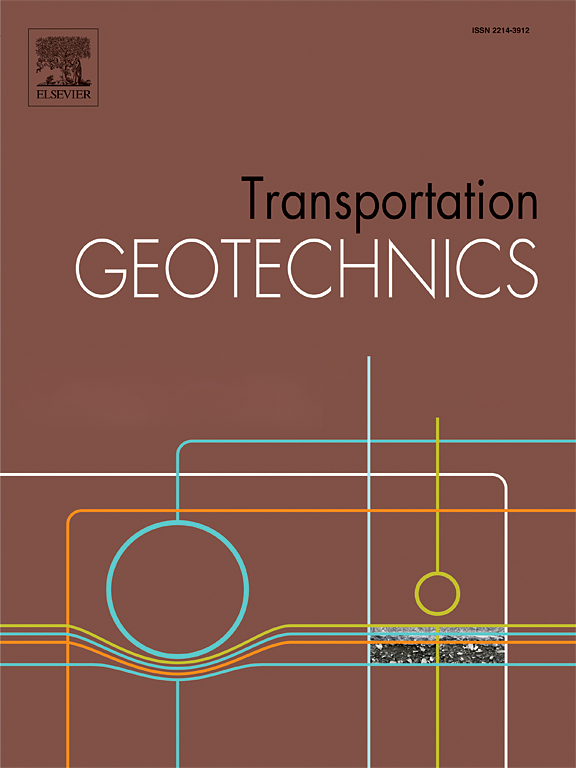Optimizing grout injection: A computational and experimental study
IF 4.9
2区 工程技术
Q1 ENGINEERING, CIVIL
引用次数: 0
Abstract
Grouting is a critical engineering technique used to repair and reinforce infrastructure, with its effectiveness largely dependent on the grout’s fluidity and injectability. This study investigates grout injection for railroad ballast reinforcement through a comprehensive approach combining computational modeling and laboratory experiments to optimize grout mixture rheology and injection strategies. The computational model simulates grout flow through aggregates using particle-resolving method for small-scale cases and a porosity-based model for large-scale applications. Parameters for the porosity model were calibrated by upscaling the small-scale results via numerical Darcy experiments. The non-Newtonian behavior of grout is represented by the Herschel–Bulkley model. Rheological parameters for the optimal grout mixture were identified through model simulations, experimental comparisons, and fluidity requirements. Laboratory experiments helped narrow down candidate rheological parameters which were further evaluated using the computational model. Additionally, the model guided the design of the injection pipe layout, spacing, and perforation hole locations. This integrated study provides an optimized grout mixture and injection configuration, offering practical recommendations for railroad ballast reinforcement applications.
优化注浆:计算与实验研究
注浆是修复和加固基础设施的一项关键工程技术,其有效性在很大程度上取决于注浆的流动性和可注入性。本研究采用计算模型与室内实验相结合的综合方法,对铁路道砟加固注浆进行研究,以优化浆料流变和注浆策略。该计算模型采用颗粒分解法模拟小规模情况下的浆液流动,采用基于孔隙度的模型模拟大规模情况下的浆液流动。通过数值达西实验放大小尺度结果,对孔隙度模型参数进行了标定。浆液的非牛顿行为用Herschel-Bulkley模型来表示。通过模型模拟、实验比较和流动性要求,确定了最佳浆液混合物的流变参数。实验室实验有助于缩小候选流变参数,并使用计算模型进一步评估这些参数。此外,该模型还指导了注塑管布置、间距和射孔位置的设计。这项综合研究提供了一种优化的灌浆混合物和注入配置,为铁路镇流器加固应用提供了实用建议。
本文章由计算机程序翻译,如有差异,请以英文原文为准。
求助全文
约1分钟内获得全文
求助全文
来源期刊

Transportation Geotechnics
Social Sciences-Transportation
CiteScore
8.10
自引率
11.30%
发文量
194
审稿时长
51 days
期刊介绍:
Transportation Geotechnics is a journal dedicated to publishing high-quality, theoretical, and applied papers that cover all facets of geotechnics for transportation infrastructure such as roads, highways, railways, underground railways, airfields, and waterways. The journal places a special emphasis on case studies that present original work relevant to the sustainable construction of transportation infrastructure. The scope of topics it addresses includes the geotechnical properties of geomaterials for sustainable and rational design and construction, the behavior of compacted and stabilized geomaterials, the use of geosynthetics and reinforcement in constructed layers and interlayers, ground improvement and slope stability for transportation infrastructures, compaction technology and management, maintenance technology, the impact of climate, embankments for highways and high-speed trains, transition zones, dredging, underwater geotechnics for infrastructure purposes, and the modeling of multi-layered structures and supporting ground under dynamic and repeated loads.
 求助内容:
求助内容: 应助结果提醒方式:
应助结果提醒方式:


